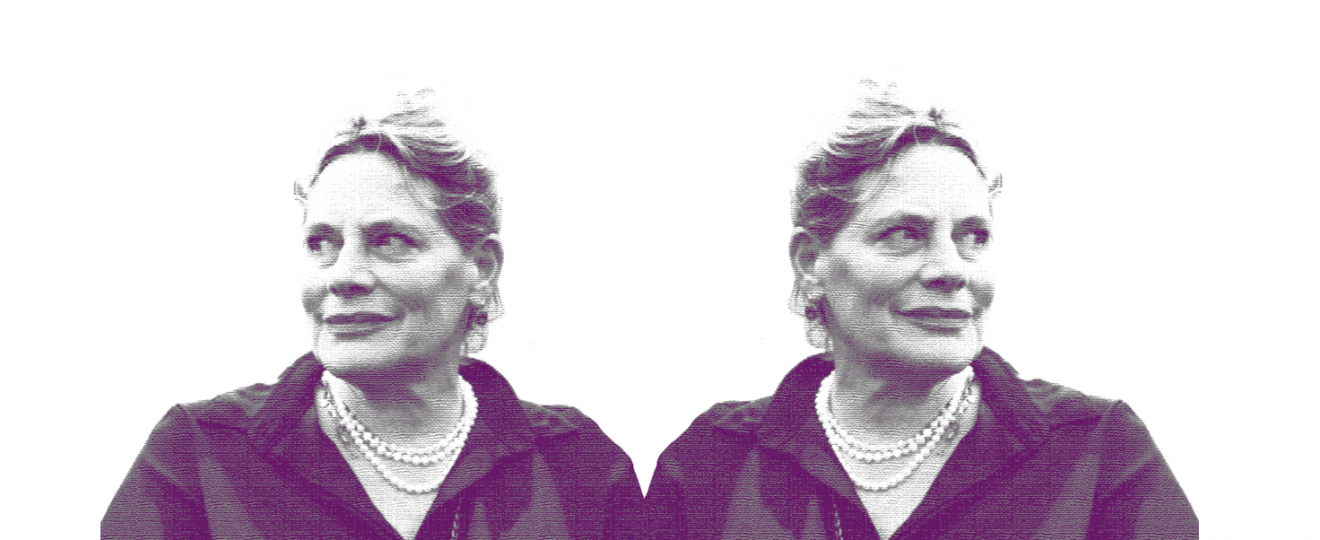In The Cost of Living, Deborah Levy wrote that ‘to unfold any number of ideas through all the dimensions of time is the great adventure of the writing life.’
German philosopher Martin Heidegger’s seminal work revolved around the ontological concepts of Time and Being. Levy, a reader of Heidegger, understands that people are beings in time. Her writing understands the fundamentals of Heidegger’s science in that time is not experienced by people chronologically. In an interview with First Draft, Levy explains:
‘what I mean by [this conceptualisation of time] just on a very basic every day level is you’re sitting on the subway and you’re thinking about yesterday and then you might be making some plans for the future or you’ve got a wish for something to happen in the future, so you’re sliding there or you are thinking about something from your childhood surfaces, and so the past and the present and the future, not in a mystical way, are all happening simultaneously for all of us all the time.’
Levy’s fiction exemplifies this line of thought, not only does she play with memory, but she splices time in a way that forces the past to consistently intrude on the present, while her characters simultaneously ruminate on their future. The Man Who Saw Everything, for example, follows British historian Saul Adler, who in 1988 is hit by a car on London’s Abbey Road. He seems fine and so continues to take a photograph with his girlfriend, Jennifer Moreau, later taking this totem with him to East Berlin. His visit, for his studies into Eastern European communist history, sees Saul not only develop feelings for his male translator, Walter (a Stasi informer) but sleep with Walter’s sister, and accidentally betray them both to the authorities, all in an apparent state of personal or emotional dissonance or detachment.

A parallel presents itself, as it often does in Levy’s writing, as the middle of the book sees Saul suffer a similar pedestrian accident on Abbey Road in 2016, aged 56. Time has inevitably passed, however the conventions of a beginning, a middle and an end of fictional texts are manipulated as the reader jumps back and forth between Abbey Road in 1988, East Berlin in the following years, and Abbey Road again in 2016. One of Jennifer Moreau’s photographs of Saul is entitled A Man in Pieces. This title is especially interesting in the consideration of time, as Saul is a character that not only appears to be never fully realised in the ‘moment’ of the novel, but one that is characteristically fragmented in his chronology; in his unreliable recounting of events from memory; in his sheer difficulty to construct a life where he feels whole.
‘It was true that I had no idea how to endure being alive and everything that comes with it.’
If we adopt Heidegger’s hypothesis on ‘being alive,’ then Saul’s reflection is inextricably linked with the notion of time, and thus the difficulties of treating time as simply sequential sit at odds with individual experience.
It is unsurprising therefore that Levy’s writing is known critically for its so-called ‘structural risks.’ Not only is the novel’s chronology extraordinarily dissonant, but Levy’s exploration of Saul’s consciousness takes the reader on a time-bending adventure where our protagonist appears to simultaneously live in different time zones; in the past in Abbey Road, in the present Abbey Road, whilst also dipping his toe in the memories of in-between. In an interview with Tobias Carroll, Levy confirmed this:
‘I needed to find a structure in which the detritus of the past washes up in the present tense and events from the future are spoken about in the present tense before they have happened. I suppose in old fashioned films this would be called flashback or flashforward.’
The Man Who Saw Everything really is filmic in this sense, as the reader follows Saul in these rapid movements through time. And yet, Levy has Saul’s personal history overlap consistently, even certain lines of dialogue are seen to be echoed in a way that confuses (although not in a manner that alienates the reader) the present, the ‘now’: ‘I had lost my job. I was no longer officially a minor historian. Perhaps I was history itself, flailing around in a number of directions, sometimes all of them at the same time’. We, the reader, understand him better, as we too become history as we flail around with him and his narrative.
The Man Who Saw Everything is a novel that begins with an accident on the Abbey Road crossing in 1988. It ends, in a harmonious echoing, with another accident on the Abbey Road crossing in 2016- both involving Saul Adler. Levy tracks Sadler’s journey to Germany, constantly haunted by both his past, and the thought of his future.
However, it isn’t only Levy’s fiction that deal with time and memory. The Cost of Living, her ‘living’ memoir and feminist manifesto, provides us with an account of her internal world, rather than the conventional, chronological retelling to which readers are accustomed. The Cost of Living presents a sphere in which past and present, again, coexist. Levy’s personal narrative seems to match that of Saul Adler, from memoir to novel, in the ramification:
‘life falls apart. We try to get a grip and hold it together. And then we realize we don’t want to hold it together.’
The memoir is, similar to the novel, set primarily in the present tense, with little intrusions of the past that recur throughout. Incidents that reveal the conditions that made Levy want to break away from her family, an event around which the book revolves, permeate these (again) filmic sequences, as the reader is forced into flashback along with the writer. Just as in The Man Who Saw Everything, this book is a haunting of personal and emotional burdens; Levy’s marriage dissolves just as her career is ascending.The Cost of Livingis a reflection on a turbulent period in her life, with constant movement through time. One moment we are in a block of flats with Levy, as she is being scolded by a neighbour. The next, we are with her in a different time, on her bike, zooming down Holloway Road with the groceries. As Levy looks back on these incidents, as personally significant as Saul Adler being hit by a car, she remembers feminist literary works such as Simone de Beauvoir’s The Second Sex in order to understand her own past; ultimately underlining the importance of reflection.
In her conscious movement away from pertaining to a particular writing style, her ‘structural risks’ and manipulation and merging of the past, present and future, Deborah Levy is a writer that confidently deals with, converts and reimagines the gargantuan notion of time. Understanding Heidegger’s conceptualisation of Beings as inevitably experiencing time in a non-linear way, Levy presents an experience of time that is not chronological, but is interspersed with memory, ruminations on the future, and time-bending sequences where the reader only becomes aware of their position in the character’s present at the final moment. In this particular case, this literary time-travelling experience does not have a dizzying or alienating effect, as expected, rather we, like her protagonists, allow ourselves to float in the fluidity of Levyian time. If you haven’t already, I would suggest that it’s high time to read Levy’s work.




